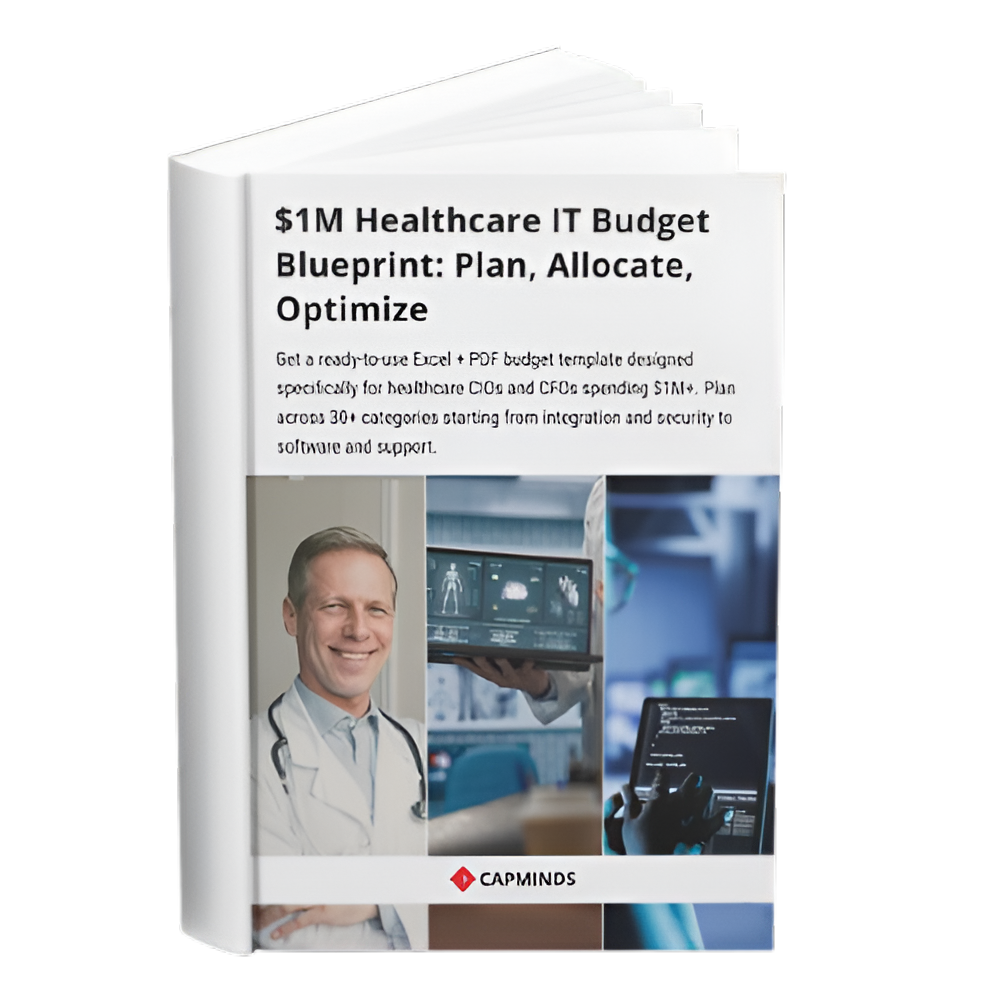9 Revenue Cycle Management Steps That Every Practice Must Know
Revenue Cycle Management is the financial foundation for healthcare practices. Every stage of the revenue cycle, from scheduling an appointment to collecting the final payment, is critical to a practice’s financial health.
Unfortunately, holes in the process frequently result in delayed payments, rejected claims, and avoidable revenue loss. Understanding the various stages of the healthcare revenue cycle allows providers to increase efficiency, decrease errors, and better overall financial performance.
In this blog, you’ll learn the stages of the healthcare revenue cycle management process and explain how each one affects your practice’s financial stability.
1. Patient Scheduling and Registration
The revenue cycle begins before a patient enters the clinic. It begins with scheduling and registration, where proper data collection establishes the medical billing process.
Front-desk personnel should gather such critical data points as demographics, insurance, and medical history. Even such small errors as a misspelled name or outdated policy number could cause such downstream claims to be denied. Therefore, the upfront checking of information will offer administrative and financial certainty to the practice.
Key tasks during registration include:
- Collecting demographic information such as name, date of birth, and contact information.
- Verifying insurance eligibility and coverage restrictions.
- Capturing referral and pre-authorization requirements.
- Educating patients about copayments, deductibles, and financial obligations
When registration is completed correctly, providers can prevent billing complications later in the claim-filing process.
2. Insurance Verification and Pre-authorization
The next crucial stage in RCM is insurance verification. Many refused claims result from incorrect or missing insurance checks. Practices that miss this step frequently encounter payment delays.
Insurance verification is a process that will identify the active treatment of a patient in regard to insurance coverage. In case pre-authorization is needed, then it has to be taken before the provision of the services. This step is very important in lessening misunderstandings between the doctors, patients, and payers.
Example
Provided that a practice does not verify the authorization of an MRI scan, the payer can deny a claim. This leaves the patient with the financial burden and becomes frustrated, which leads to loss of revenue. Insurance verification can be automated using connected technologies to save time and enhance accuracy through practices.
3. Patient Encounter and Clinical Documentation
The patient encounter lies at the center of the healthcare process. Accurate recording of the visit is also of the essence to the revenue cycle. Physicians need to be keen when making the diagnosis, treatment, and procedure records to guarantee proper coding.
Clinical records are supposed to be full, punctual, and regular. Lost notes or vague descriptions often lead to coding issues, which interrupt the medical billing cycle.
To improve efficiency, many clinics use EHR systems that come with billing modules, ensuring that clinical and financial data flow smoothly. Good documentation practices not only help patients but also maintain revenue integrity.
4. Medical Coding
Medical coding transforms clinical records into standardized medical coding for invoicing and insurance claims. Every diagnosis, treatment, or operation is assigned a code from the ICD-10, CPT, or HCPCS databases.
If the coding is incorrect or incomplete, the claim will probably be refused. For example, coding a complex procedure as a simpler one may result in underpayment, but miscoding can cause compliance concerns. Revenue cycle management teams must prioritize proper coding, which is frequently supplemented by coding audits and training.
Well-defined coding ensures:
- Fewer claim denials.
- Improved compliance with payer criteria.
- Clear data for analysis and reporting
5. Claims Submission Process
After coding is completed, the billing team begins the claims submission process. Claims can be submitted electronically via clearinghouses or on paper; however, electronic submission is faster and has fewer errors.
The claim contains all patient information, procedure codes, provider details, and payer information. Claims must undergo an internal quality check or claim scrubber before being submitted. This helps in the identification of missing data, inconsistent codes, or formatting errors that may lead to rejection.
Timely submission is also important. Most payers have strict submission deadlines, and missing them might result in automatic denials. Healthcare organizations can improve cash flow by speeding up the claims submission process.
Related: RCM Best Practices: How to Optimize Billing and Reimbursement in 2025
6. Payment Posting and Verification
Payments or remittance advice are returned to the provider once the payer has completed and processed the claim. This stage involves entering payments into the system and balancing them against anticipated reimbursements.
Posting of payment allows the billing personnel to know whether the payer paid the claim in full, partly, or did not pay it at all. Correct checks are to ensure that mistakes are detected at the initial stage.
Indicatively, in case a payer often pays less than they have agreed upon in the contract, the practice can approach the payer to rectify their payment.
Financial reporting transparency is enhanced because manual errors in practices that automate the posting and verification of payments are removed.
7. Medical Claims Denial Management
Even with strong workflows, denials are unavoidable. That is why medical claim denial management is an essential component of RCM. A denial can occur for a variety of reasons, including coding problems, missing information, eligibility concerns, or late submissions.
Effective Denial Management includes:
- Tracking denial trends to determine root causes.
- Resolving problems and resubmitting claims quickly.
- Communicate with payers to settle problems.
- Training employees to prevent repeat mistakes.
Practices that aggressively handle denials can recover significant revenue. Industry surveys reveal that approximately 65% of refused claims are never revised. With a proactive rejection management plan, practices can increase their clean claim rate and overall collections.
8. Patient Billing and Collection
Once the payment has been received by the insurance companies, the patient will pay the remaining amount, which might include copayments or deductibles. This stage usually affects patient satisfaction and the revenue of the practice.
Payments are made on time with clear and transparent bills. The practices are supposed to provide detailed bills, multiple payment options, and alerts through mobile phones, e-mail, or patient portals. Clinics are able to reduce outstanding balances and maximize financial outcomes by making the process more patient-oriented.
Key recommended practices include:
- Providing flexible payment plans for high debt.
- Providing upfront cost estimates during registration.
- Educating patients about insurance coverage and duties.
When patients understand their invoices, they are more likely to pay on time, which reduces bad debt for the practice.
9. Reporting and Performance Monitoring
The final stage in the healthcare revenue cycle is constant monitoring. Regular reporting helps to identify problems, assess KPIs, and enhance the overall revenue cycle.
Typical RCM metrics include:
- Clean claim rate
- Average days of accounts receivable
- Denial rate
- Net Collection Rate
- Patient Collection Percentage
Healthcare professionals may make more informed decisions by using data and dashboards. If denial rates increase, data analysis might identify whether the problem is with coding, eligibility, or payer processes. These insights are critical for ongoing sales cycle management optimization.
Optimize Your Revenue Cycle with CapMinds Services
At CapMinds, we understand that managing the complex steps of the healthcare revenue cycle requires more than just technology; it requires a partner who knows how to keep your practice financially strong and compliant.
Our Revenue Cycle Management services are designed to minimize denials, accelerate reimbursements, and free your staff to focus on patient care.
We deliver complete digital health tech solutions, including:
- Revenue Cycle Management: Streamlined workflows to improve cash flow and reduce revenue leakage
- Medical Billing Services: End-to-end billing support with accurate claim submission and payment posting
- Medical Claim Denial Management: Proactive tracking, rework, and prevention strategies
- Healthcare IT Solutions: Custom EHR/EMR, interoperability, and compliance-focused integration
Partner with CapMinds and gain a trusted ally that transforms your financial operations. Let us help you achieve higher collections, fewer denials, and sustainable growth.
Contact CapMinds today to modernize your revenue cycle with confidence.




